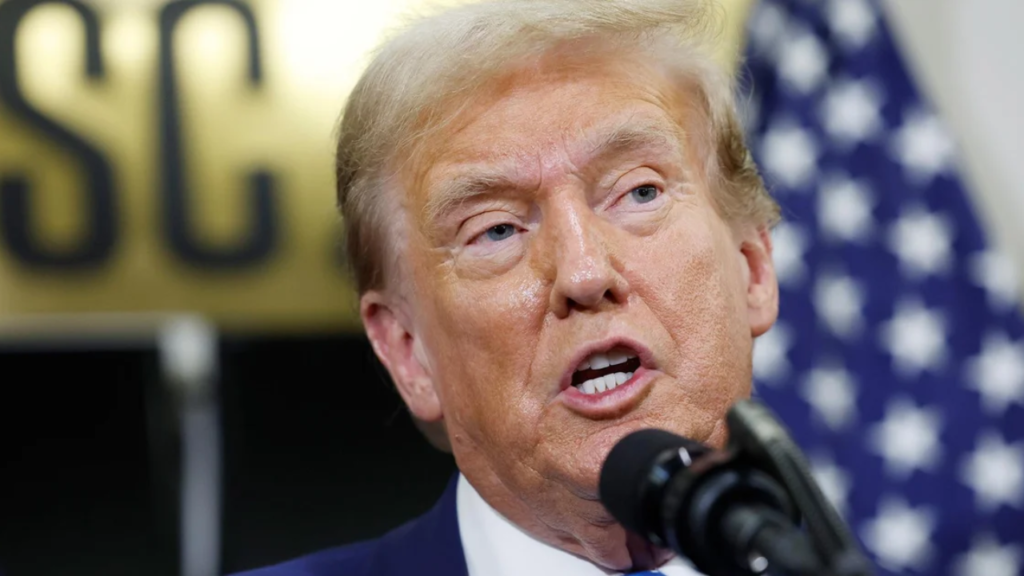Since April began, President Donald Trump’s tariff plans have been making headlines — and causing a lot of confusion. First announced during his 2024 campaign, these import taxes are now being rolled out. But the plans keep shifting.
First, Trump said major tariffs would start on April 2. Then, he paused some of them. Later, he gave exemptions for smartphones and laptops. And just like that, what started as a clear policy became unpredictable.
This back-and-forth made the stock market react strongly. Some experts even called the tariffs “worse than the worst-case scenario.
” Even Trump supporters in the business world raised concerns. Elon Musk, CEO of Tesla and a White House adviser, publicly criticized Trump’s trade adviser and warned against the tariffs.
So, what are tariffs? Who pays them? And how do they impact your everyday life? Let’s break it down.
What Is a Tariff?
A tariff is a tax a country puts on goods coming from another country. For example, if there’s a 60% tariff on Chinese computer parts, then a company importing those parts into the U.S. will have to pay 60% more in tax on them.
Trump has used tariffs as a core part of his economic strategy. He believes that taxing foreign products will bring manufacturing back to America and generate revenue.
The U.S. imports around $3 trillion worth of goods each year. Trump’s plan includes a flat 20% tariff on all imports and a 60% tariff on goods from China.
Who Pays for Tariffs?
Trump has said that other countries pay these taxes, but that’s not how it works. U.S. businesses that import products pay the tariffs. To make up for this cost, they usually raise prices. So, in the end, the consumer — people like you — ends up paying more.
Trump later admitted that Americans might feel some “pain” because of these tariffs. Companies like Acer have already announced price hikes, and experts say more increases are likely for electronics like smartphones, laptops, and TVs.
Which Trump Tariffs Are Active Now?
Trump’s April 2 announcement included:
- A 25% tariff on foreign-made cars and car parts, which started on April 3.
- A 10% general tariff on all imported goods, active since April 5.
- Special “reciprocal” tariffs for countries like India, Japan, and EU nations, set to begin on April 9 — but now delayed 90 days.
Other active tariffs include:
- A 25% tax on steel and aluminum imports.
- A 20% tariff on all Chinese goods (increased from 10% in February and then raised to 145% in total).
- A 25% tariff on some goods from Canada and Mexico not covered under earlier trade deals.
Some tech products like smartphones, laptops, and chips were temporarily exempted from these tariffs on April 11 — but it’s unclear how long that will last.
How were the “reciprocal” Tariffs Calculated?

This part created the most confusion. Trump’s team said these tariffs match what other countries charge the U.S. But experts found several errors. For example, the U.S. claimed the EU charges a 39% tariff — but in reality, it’s closer to 3%.
Journalist James Surowiecki discovered that the numbers might’ve been calculated by dividing the trade deficit by the total amount of imports, which is not how tariffs are normally set. He called it “extraordinary nonsense.”
What Will These Tariffs Do to Prices in The U.S.?
According to Yale’s Budget Lab, Trump’s tariffs could push inflation up by 2.3% in 2025. That means the average American household might spend $3,800 more a year.
Tech companies like Nintendo have already responded. They delayed the pre-orders for their upcoming Switch 2 console, possibly due to uncertainty around pricing. Though prices weren’t officially raised, the fear of tariffs affected launch plans.
Even if a product doesn’t come from a country with new tariffs, prices might still go up. Why? Because companies can blame rising costs on tariffs, even if they’re not directly impacted, and consumers might not know the difference.
Will Prices Rise Immediately?
Not right away. If a store already has items in stock, you won’t see price increases immediately. But once they need to restock with new imports, the higher tariffs will kick in. That’s when you’ll notice higher prices — likely in a few weeks or months.
A CNET survey showed that 38% of U.S. shoppers feel pressured to buy things now before tariffs push prices up. Some are rushing to buy electronics, while others are putting off big purchases due to uncertainty.
What Is Trump Trying to Achieve with Tariffs?
The goal of tariffs is usually to make imported goods costlier so that people buy local instead. This helps protect domestic industries.
Trump says he wants to rebuild U.S. manufacturing. But experts point out that this isn’t something that can happen overnight. Building factories in the U.S. takes time, and even the materials needed to build them might be taxed under the same tariffs.
That means American companies will struggle to switch to domestic production quickly. Even if they do, the factories might rely on automation, meaning fewer jobs will be created.
Trump has also pushed the idea of making iPhones entirely in the U.S. Experts say this is unrealistic — an American-made iPhone could cost around $3,500.
Are There Any Long-Term Benefits?
It’s hard to say. Some analysts think that if tariffs raise government revenue, they could reduce the need to raise other taxes. But this depends on whether people keep buying the expensive, tariffed goods. If not, the government doesn’t earn much, and consumers still suffer.
Billionaire Mark Cuban warned that Trump’s tariff policy ignores small businesses. Most American companies are small and can’t afford to build factories or absorb losses. He predicted these businesses and their workers would be hit the hardest.
Final Thoughts
Tariffs are complex. On paper, they seem like a way to protect local industries. But in practice, they raise prices for everyone and create instability in the market. Whether or not Trump’s plan will work depends on many things, including how other countries respond and whether U.S. companies can adjust quickly.
For now, though, the average American might want to keep an eye on rising prices, especially if planning to buy electronics or foreign-made goods.
Disclaimer- Our team has thoroughly fact-checked this article to ensure its accuracy and maintain its credibility. We are committed to providing honest and reliable content for our readers.






